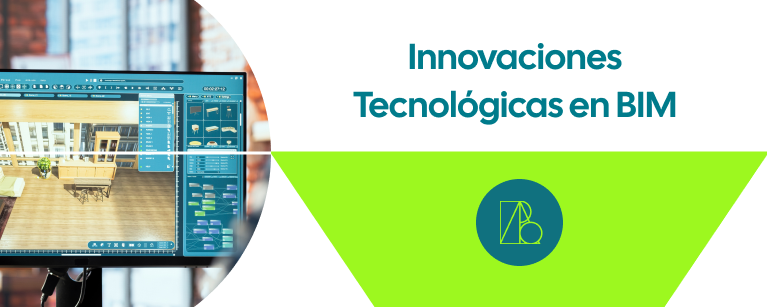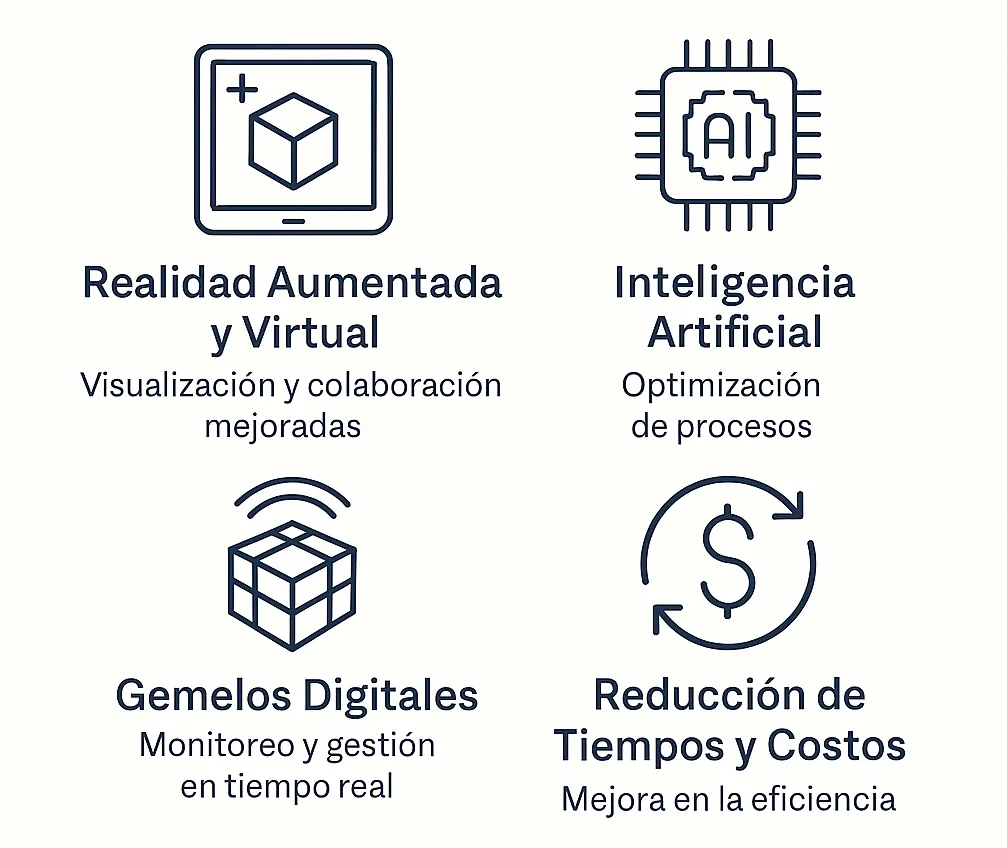
The construction industry is undergoing a significant transformation driven by the adoption of advanced Building Information Modeling (BIM) technologies. These innovations are redefining the way companies approach project design, planning, and execution, delivering substantial improvements in efficiency and cost reduction.

Integration of Augmented Reality (AR) and Virtual Reality (VR) in BIM
The combination of BIM with Augmented Reality and Virtual Reality technologies has revolutionized visualization and collaboration in construction projects. These tools allow teams to interact with three-dimensional models in real time, facilitating early detection of conflicts and optimizing decision-making. According to an EADIC report, the integration of AR and VR into BIM has improved project efficiency and accuracy, and this trend is expected to continue through 2025.
Artificial Intelligence and Machine Learning Applied to BIM
The incorporation of Artificial Intelligence (AI) and Machine Learning into BIM has made it possible to analyze large volumes of data to predict problems before they occur, optimizing construction processes. These technologies have improved resource planning and management, offering more sophisticated predictive and analytical solutions. The integration of AI into BIM is anticipated to deepen further by 2025, providing advanced tools for project management.
Adoption of Digital Twins in Construction
Digital twins, virtual replicas of buildings or infrastructure, have emerged as a key tool in construction project management. These models allow real-time performance monitoring and management, facilitating predictive maintenance and operational optimization. The University of the Basque Country has developed virtual twins to improve medical treatments, reflecting the potential of this technology in various sectors.
Impact of BIM on Time and Cost Reduction

The implementation of BIM has proven effective in reducing delivery times and costs in infrastructure projects. In Colombia, the use of BIM has led to a reduction of up to 30%TP3T in construction times and cost savings of up to 15%TP3T. These figures highlight the importance of adopting BIM to improve competitiveness in the sector.
Conclusion
The integration of advanced technologies into BIM is transforming the construction industry, offering significant opportunities to improve efficiency, reduce costs, and increase competitiveness. Companies that embrace these innovations will be better positioned to meet market challenges and the growing demands for more complex and sustainable projects.
